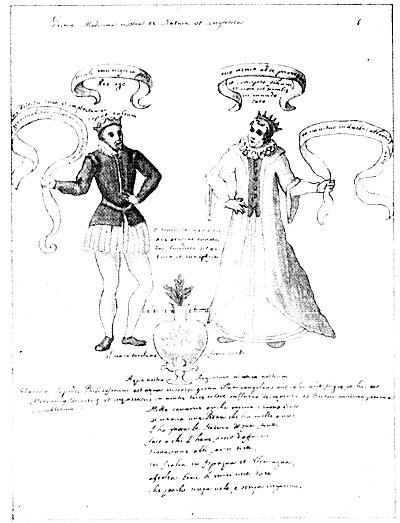Strong wine made from the juice of the grape was looked upon as symbolic of the false life and false light of the universe, for it was produced by a false process–artificial fermentation. The rational faculties are clouded by strong drink, and the animal nature, liberated from bondage, controls the individual–facts which necessarily were of the greatest spiritual significance. As the lower nature is the eternal tempter seeking co lead man into excesses which inhibit the spiritual faculties, the grape and its product were used to symbolize the Adversary.
The juice of the grape was thought by the Egyptians to resemble human blood more closely than did any other substance. In fact, they believed that the grape secured its life from the blood of the dead who had been buried in the earth. According to Plutarch, “The priests of the sun at Heliopolis never carry any wine into their temples, * * * and if they made use of it at any time in their libations to the gods, it was not because they looked upon it as in its own nature acceptable to them; but they poured it upon their altars as the blood of those enemies who formerly had fought against them. For they look upon the vine to have first sprung out of the earth after it was fattened with the carcasses of those who fell in the wars against the gods. And this, say they, is the reason why drinking its juice in great quantities makes men mad and beside themselves, filling them as it were with the blood of their own ancestors.” (See Isis and Osiris.)
Among some cults the state of intoxication was viewed as a condition somewhat akin to ecstasy, for the individual was believed to be possessed by the Universal Spirit of Life, whose chosen vehicle was the vine. In the Mysteries, the grape was often used to symbolize lust and debauchery because of its demoralizing effect upon the emotional nature. The fact was recognized, however, that fermentation was the certain evidence of the presence of the solar fire, hence the grape was accepted as the proper symbol of the Solar Spirit–the giver of divine enthusiasm. In a somewhat similar manner, Christians have accepted wine as the emblem of the blood of Christ, partaking of it in Holy Communion. Christ, the exoteric emblem of the Solar Spirit, said, “I am the vine.” He was therefore worshiped with the wine of ecstasy in the same manner as were his pagan prototypes–Bacchus, Dionysos, Arys, and Adonis.
The mandragora officinarum, or mandrake, is accredited with possessing the most remarkable magical powers. Its narcotic properties were recognized by the Greeks, who employed it to deaden pain during surgical operations, and it has been identified also with baaras, the mystic herb used by the Jews for casting out demons. In the Jewish Wars, Josephus describes the method of securing the baaras, which he declares emits flashes of lightning and destroys all who seek to touch it, unless they proceed according to certain rules supposedly formulated by King Solomon himself.
The occult properties of the mandrake, while little understood, have been responsible for the adoption of the plant as a talisman capable of increasing the value or quantity of anything with which it was associated. As a phallic charm, the mandrake was considered to be an infallible cure for sterility. It was one of the Priapic symbols which the Knights Templars were accused of worshiping. The root of the plant closely resembles a human body and often bore the outlines of the human head, arms, or legs. This striking similarity between the body of man and the mandragora is one of the puzzles of natural science and is the real basis for the veneration in which this plant was held. In Isis Unveiled, Madam Blavatsky notes that the mandragora seems to occupy upon earth the point where the vegetable and animal kingdoms meet, as the zoophites and polypi do in die sea. This thought opens a vast field of speculation concerning the nature of this animal-plant.
According to a popular superstition, the mandrake shrank from being touched and, crying out with a human voice, clung desperately to the soil in which it was imbedded. Anyone who heard its cry while plucking it either immediately died or went mad. To circumvent this tragedy, it was customary to dig around the roots of the mandrake until the plant was thoroughly loosened and then to tie one end of a cord about the stalk and fasten the other end to a dog. The dog, obeying his master’s call, thereupon dragged the root from the earth and became the victim of the mandragora curse. When once uprooted, the plant could be handled with immunity.

Moe is the founder of GnosticWarrior.com. He is a father, husband, author, martial arts black belt, and an expert in Gnosticism, the occult, and esotericism.



![How the South Saxons received Eadbert and Eolla, and the West Saxons, Daniel and Aldhelm, for their bishops; and of the writings of the same Aldhelm [705 A.D.] | Book 5 | Chapter 17 How the South Saxons received Eadbert and Eolla, and the West Saxons, Daniel and Aldhelm, for their bishops; and of the writings of the same Aldhelm [705 A.D.] | Book 5 | Chapter 17](https://www.gnosticwarrior.com/wp-content/plugins/contextual-related-posts/default.png)
